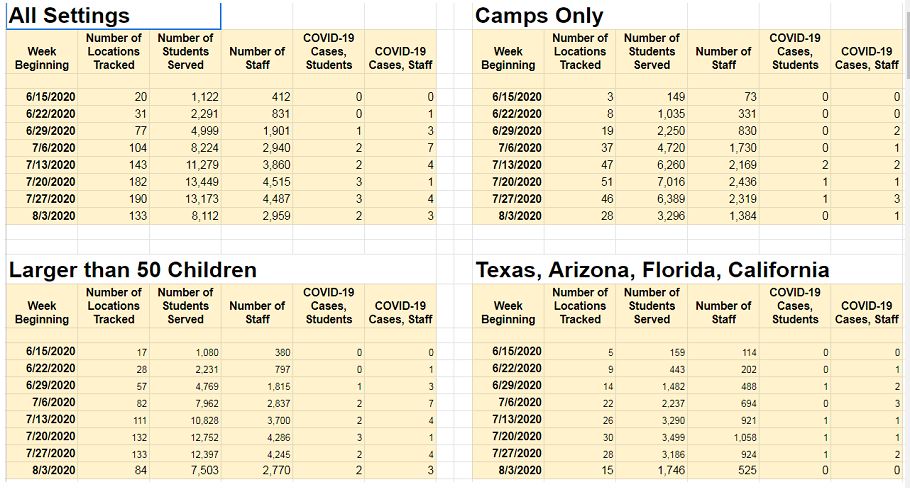With so many news agencies reporting numbers on the Covid-19, it looks like many Americans are very confused on the data. Now with more data to analyze, the data is showing that kids don’t really get infected very easily, nor do they have extreme reactions to put them in the hospital. The latest news is repeating that many states are a “hotspot”, with many other states freaking out and closing down again or not reopening the schools on time this fall. Let’s look at the data…
From an article from the Conservative Review. With most of the links in this section on their website.
Amid the debate over reopening schools without draconian restrictions, some of the best case studies from which to draw conclusions are child-care settings that have already been open during the pandemic. A number of child-care facilities for young children never shut down, and a goodly number of camps wound up opening later in the summer for children of all ages. New data show remarkably few cases and no reported clinical problems from those cases.
Emily Oster, an economics professor at Brown University, and Galit Alter, a professor of medicine at Harvard Medical School, created a database of COVID-19 cases from selectively reporting child-care facilities and summer camps at their website, Covid Explained.

Conservative Review China Flu Data Results
Here are the up to date database results to view.
Obviously, this is not a scientific study because the facilities voluntarily participated in this tracking program and they are not randomly sampled. But the size is large enough to get a sense that there really is not a lot of disruption going on, and if not for the panic and mass testing, they probably would never even have known about these few cases. In terms of passing around bugs, this is nothing more or less than we typically see from children’s institutions.
Another University posted their results and found this to be true as well, low numbers! Here is their current count on the web page, University of Kentucky.
The University of Kentucky has already tested well over 7,000 students, and 0.6% of them (41 students) tested positive. Absent any testing, we probably would not know about a single case, because none of them rose to the level of anything more acute than typical bugs that are passed around.
The Atlanta Journal-Constitution, which later identified the camp as “Camp High Harbor” in Rabun County, reported that “state health officials said they were not aware of any hospitalizations or fatalities stemming from the outbreak.” All you will read about are asymptomatic cases, sore throats, and mild fevers. The CDC did a study later in the camp “debacle”. Here is their analysis.
According to the CDC, out of the 260 who tested positive, 136 cases had available documented symptom data. Among them 26% reported no symptoms, while 74% did report symptoms but “those most commonly reported were subjective or documented fever (65%), headache (61%), and sore throat (46%).”
So, it’s likely that the counselor that first spread it was the one in charge of the children 6-10.

